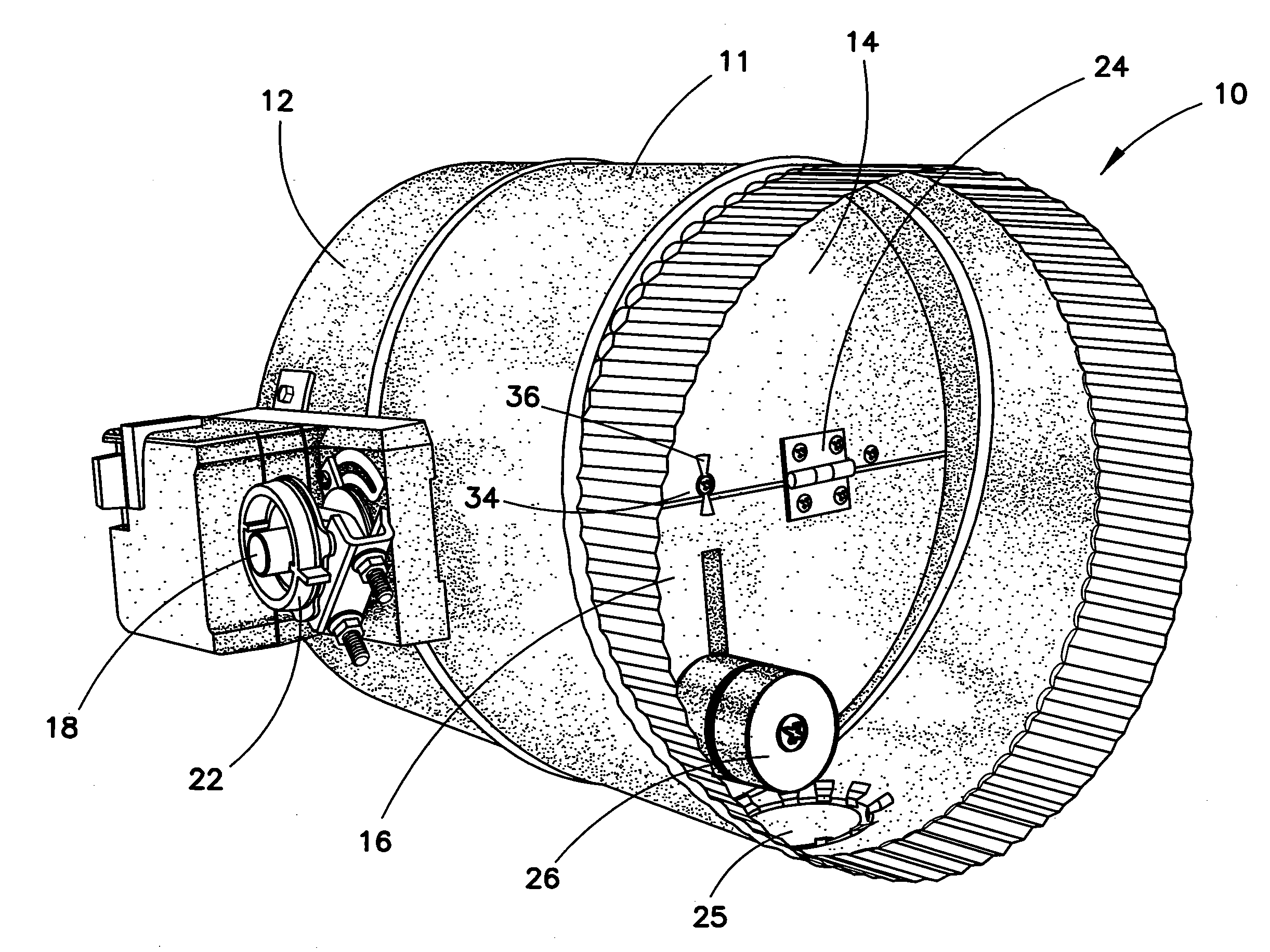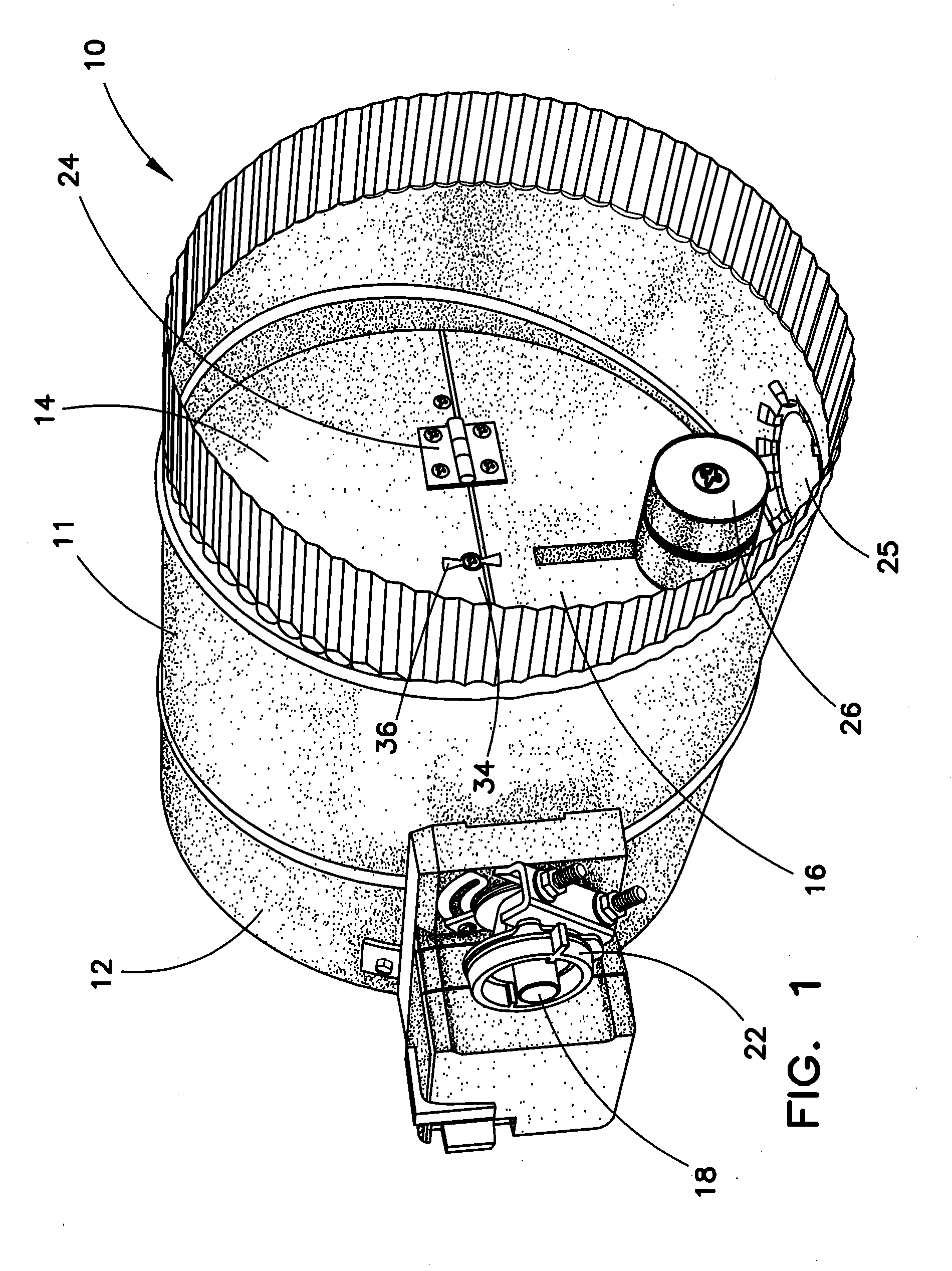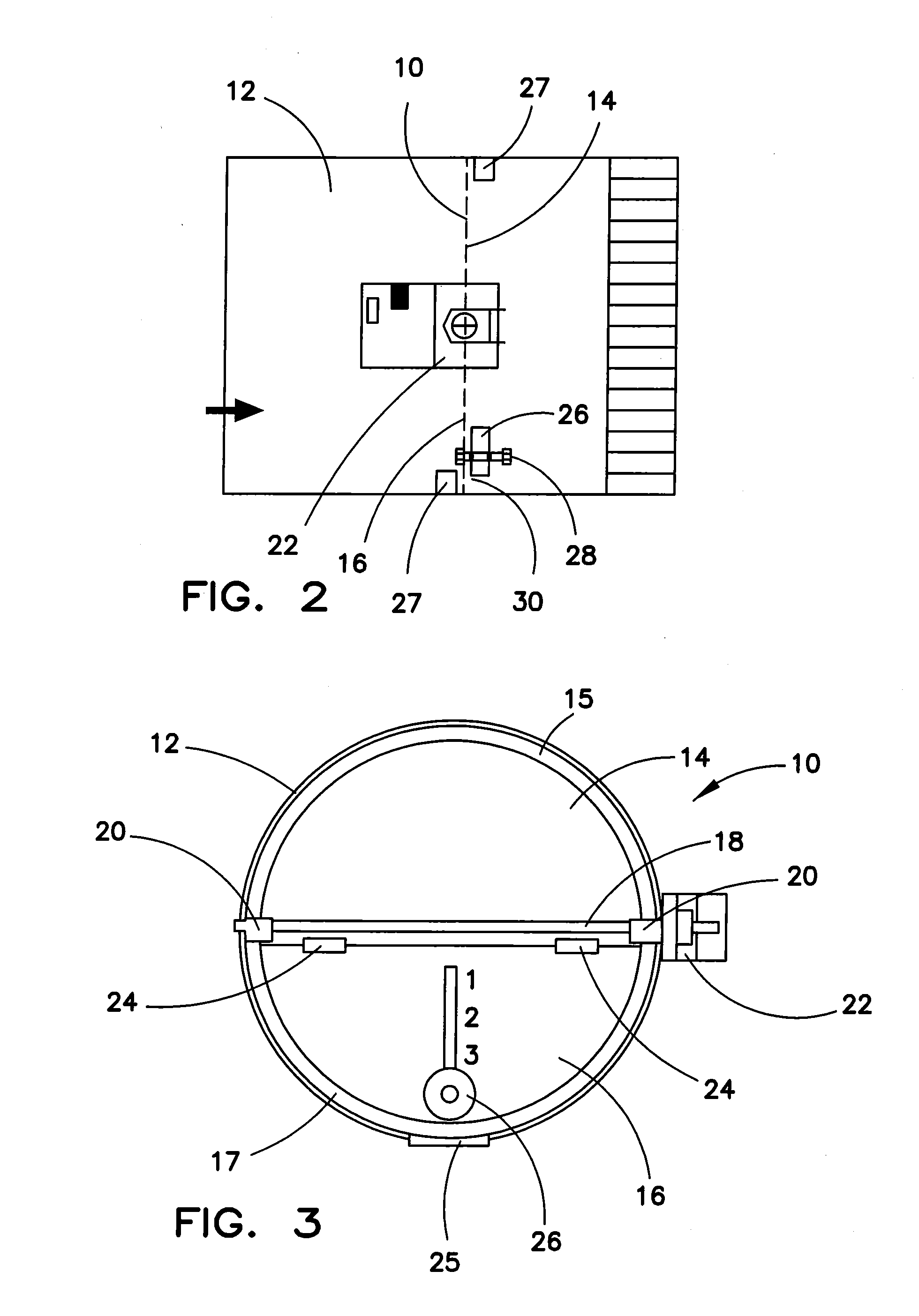Barometric relief air zone damper
a damper and barometric relief technology, applied in the field of heat, ventilation and air conditioning, can solve the problems of increasing noise and drafts, inefficient energy consumption, and expensive ways to solve problems, and achieve the effects of reducing the size of damper inventory, reducing drafts and air noise, and reducing coil freeze up
- Summary
- Abstract
- Description
- Claims
- Application Information
AI Technical Summary
Benefits of technology
Problems solved by technology
Method used
Image
Examples
Embodiment Construction
[0024]FIG. 1 shows a barometrically responsive zone damper 10 positioned within a segment of ducting 11, which forms a damper shell 12. The damper 10 can include an upper portion 14 and a lower portion 16. The upper portion 14 can be fixed to a shaft 18 mounted in bushings fixed in the shell 12, the shaft 18 extending through the shell 12. The position of the shaft 18 and upper portion 14 of the zone damper 10 can be controlled by a damper actuator 22 that can be located on the outside or inside of the shell 12. The damper actuator 22 can be situated on either side of the shell 12 and controlled by a zone thermostat, not shown. The lower portion 16 of the zone damper 10 is connected to the upper portion 14 of the damper by a hinge 24 to permit independent movement of the lower portion 16 relative to the upper portion 14. In the absence of a sufficient air pressure differential or air flow through the ducting 11, the force of gravity will cause the lower portion 16 to pivot to a posi...
PUM
 Login to View More
Login to View More Abstract
Description
Claims
Application Information
 Login to View More
Login to View More - R&D
- Intellectual Property
- Life Sciences
- Materials
- Tech Scout
- Unparalleled Data Quality
- Higher Quality Content
- 60% Fewer Hallucinations
Browse by: Latest US Patents, China's latest patents, Technical Efficacy Thesaurus, Application Domain, Technology Topic, Popular Technical Reports.
© 2025 PatSnap. All rights reserved.Legal|Privacy policy|Modern Slavery Act Transparency Statement|Sitemap|About US| Contact US: help@patsnap.com



